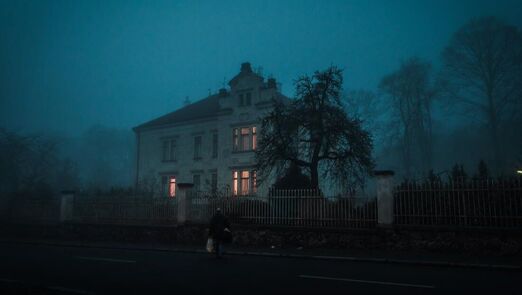|
By Anya Shukla Silvia Moreno-Garcia wrote her Masters thesis on “Women and Eugenic Thought In the Work of H.P. Lovecraft,” in which she discusses the intersections between science fiction, feminism, and scientific racism. It’s an interesting read, especially because bits and pieces of that early work crop up in “Mexican Gothic.” (Plus, it’s pretty accessible, as academic works go. I’m looking at you, “Algorithms of Oppression.”) Review: A young socialite in 1950s Mexico, Noemí Taboada leaves her high-society lifestyle behind in Silvia Moreno-Garcia’s “Mexican Gothic.” After receiving a strange letter from her recently-married cousin, Catalina Doyle, Noemí travels to the Doyle family mansion to check up on her relative. Noemí finds Catalina sick and muttering about voices in walls… and soon begins to experience strange dreams herself. To make matters worse, the locals tell her that the Doyles—Virgil, Catalina’s husband; Howard, Virgil’s father; Florence, Virgil’s aunt; and Francis, Florence’s son—are cursed. Although its pacing and plot cause the novel to falter at the halfway mark, “Mexican Gothic” is steeped in allusions to past Gothic literature. A multilayered read for fans of the Gothic Romance genre, the book builds on all that has come before it. My Rating: 3.75/5. What I Loved: The general spookiness! “The house loomed over them like a great, quiet gargoyle” (pg. 65), Moreno-Garcia writes. “By the entrance there had been a painting or mirror on the wall, and its oval outline was visible against the wallpaper, like a lonesome fingerprint at the scene of the crime” (pg. 66). I’m getting goosebumps already. Like Edgar Allen Poe in “The Fall of the House of Usher,” Moreno-Garcia has a knack for describing terrifying locations, foreshadowing the terrifying things that will happen inside of them. “House of Usher” is not the only book “Mexican Gothic” pays homage to. During one of Noemí’s many hallucinatory dreams, there’s a little allusion to “The Tell-Tale Heart,” a short story about a murderer who hides a body under his house but is driven mad by the sound of its heartbeat: “Beneath her the floorboards pulsed too; a heart, alive and knowing” (pg. 135). We see repeated references to “Wuthering Heights,” “Jane Eyre,” and “Sleeping Beauty” (the original version where the stepmother gets killed), plus a healthy dose of “The Yellow Wallpaper,” Charlotte Perkins Gilman’s short story about the rest cure. In the 1900s, many women were forced into strict bed rest--without any intellectual or physical activities—for up to two months to cure their “hysteria.” Like Perkins Gilman’s main character, Catalina is forced to stay in bed, where she starts to have visions. These literary connections position “Mexican Gothic” as a continuation of a long line of Gothic Romances. Or maybe “continuation” is not the right word. “Mexican Gothic” is in active conversation with its predecessors. After all, while some female authors addressed the pervasive sexism of their eras, many 20th century Gothic/supernatural books maintain faint echoes of racism. Perkins Gilman was an eugenics proponent, for example. Given that context, what does it mean to have horrific, physically repulsive characters like Howard discuss eugenics and Noemí’s dark skin? To have the Doyles—the sources of evil, according to the locals—be European transplants who grew rich off the spoils of colonialism and silver? To have a female character of color save the white prince? “Mexican Gothic” points out what other Gothic Romances might pass over, and in doing so, reclaims and reimagines the canon. What I Didn’t Love (spoiler alert): The big reveal. I don’t want to spoil too much, but I just didn’t love the reason behind the strange goings-on at the Doyles. Especially because Noemí gets told what causes her weird dreams and compulsions (which feels like a cop-out) rather than discovering the secret herself. Plus, I think first half of the book provides such a fabulous slow build-up that the second half’s rapid action—the discovery, the attempted escapes, the mushroom burning—feels too rushed. I wanted a bit more time to understand what’s going on and why the characters act like they do. Why does Catalina—who’s been sedated for a while—suddenly wake up and start stabbing people? How does Noemí have the strength to knock Virgil out while drugged? What’s going on with Francis? A Quote I Would Like On Goodreads: “A woman who is not liked is a bitch, and a bitch can hardly do anything: all avenues are closed to her” (pg. 138-139). Up next: “When I Grow Up I Want to Be a List of Further Possibilities" by Chen Chen.
0 Comments
Your comment will be posted after it is approved.
Leave a Reply. |
Archives
February 2023
Categories
All
|

 RSS Feed
RSS Feed